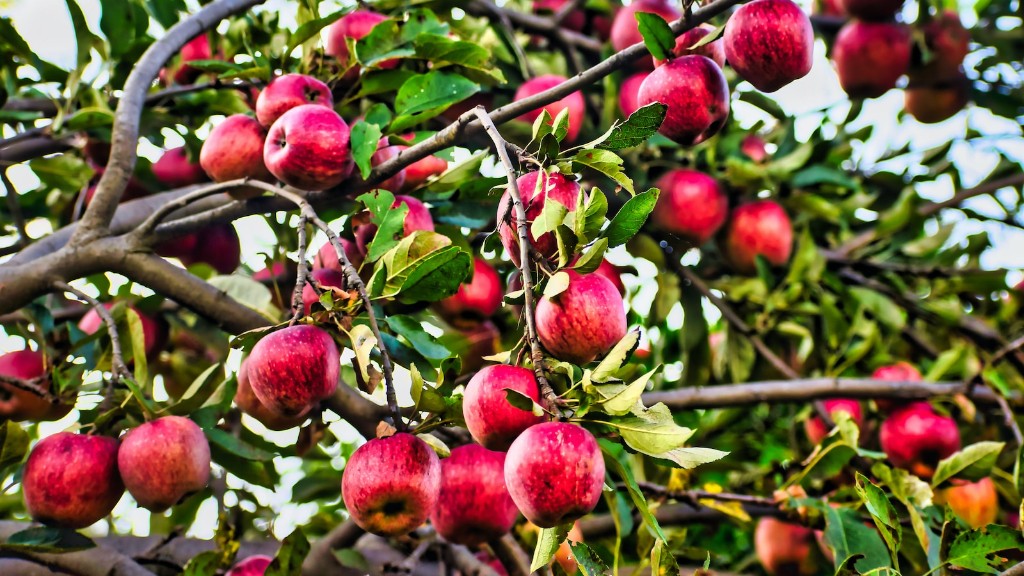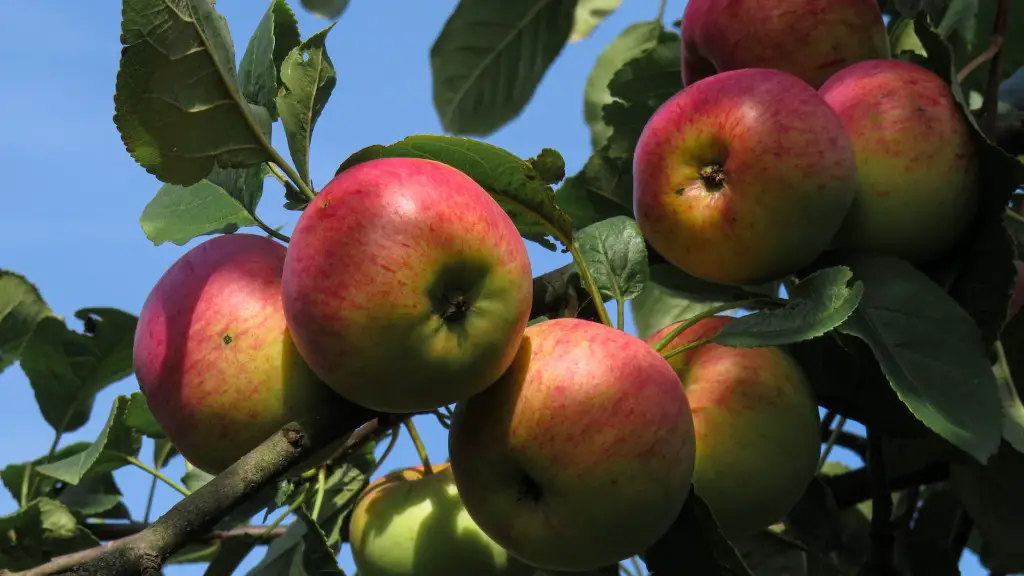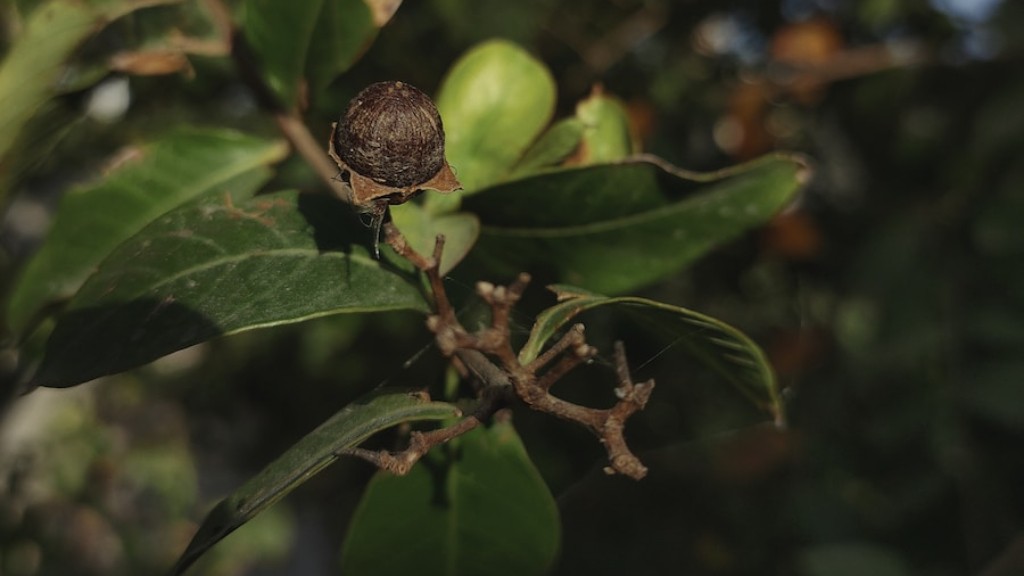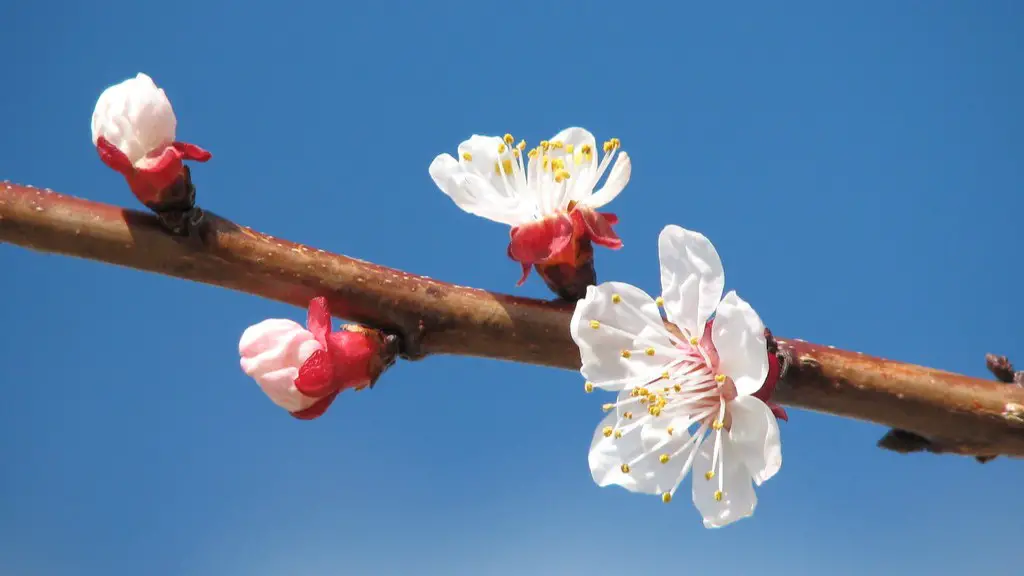Pruning an overgrown apple tree can be a daunting task, but with a little bit of knowledge and the right tools, it can be easily accomplished. The first step is to identify the areas of the tree that need to be pruned. This is usually done by looking for areas where the branches are crossing or rubbing against each other, or where there are a lot of dead or dying branches. Once you have identified the areas that need to be pruned, you will need to select the right tools for the job. For smaller branches, a pair of hand pruners will suffice, but for larger branches, you will need a pruning saw.
Once you have the right tools, you can begin pruning the tree. When pruning, always cut branches at a 45-degree angle, just above a node (the point where two leaves are attached to the branch). This will help the wound heal quickly and prevent water from collecting in the cut. After you have pruned the tree, you can then shape it by removing any branches that are growing in the wrong direction.
The first step is to remove any dead, diseased, or damaged branches. Next, thin out the remaining branches to allow more light and air to reach the center of the tree. Finally, cut back the remaining branches to the desired size.
What is the best month to prune apple trees?
Apple tree pruning is tricky, but it’s very important if you want the tree to be healthy and productive. Some say the best months to do pruning apple trees are between mid-October to December, but actually you can perform it even during the summertime.
A good rule of thumb for pruning apple trees is to limit it to 20% or less of the canopy each year. This will help keep the tree healthy and productive.
How do you prune a fruit tree that is too tall
Pruning the tree to the same height annually is a great way to keep it healthy and looking its best. If the tree is structurally sound but taller than you can manage safely, reducing the tree height slowly over a three- year period is the best way to go. Once you determine how tall you desire the tree to be, cut one third of the excess each year. This will allow the tree to adjust to the new height slowly and help prevent any damage to the tree.
When pruning, the goal should be to remove weak, diseased, injured, or narrow-angle branches. In addition, the weaker of any crossing or interfering branches should be removed, as well as one branch of forked limbs. Upright branches and any that sweep back inward toward the center of the tree should also be removed.
Is it OK to prune apple trees in the fall?
Pruning apple trees in the fall can help to encourage new growth in the spring. By waiting until the leaves have fallen off, the tree will be in a fully dormant state and won’t put out any new growth until the weather warms up again. This can help to ensure that the new growth is strong enough to withstand the cold weather.
If you want to prune your apple tree, it is best to do so when it is still dormant. This means early spring, about two weeks after the last frost. Not only are the buds easier to see and cut at this time, but the cuts will also heal more quickly. If you wait until fall to prune, new growth will start but it will be damaged by the cold winter.
Should you cut the top off an apple tree?
It is generally accepted that topping is bad for any tree, including fruit trees. The suckers that shoot back up from a topped fruit tree are not only ugly, but they produce leaves instead of fruit. Old trees can be invigorated by heavy pruning to produce new wood and spur systems. There may be a temporary drop in fruit production, but it is generally outweighed by the long-term benefits.
If you want to prevent a tree from growing taller, you need to prevent its leaves from Photosynthesizing. Topping the tree will not work, as this will eventually kill the tree. Instead, you need to provide the tree with a consistent food source that will prevent its leaves from manufacturing food.
How long does an apple tree live for
The average healthy and well-cared apple tree can live from 50 to 80 years. However, there are striking exceptions to this rule. Some apple trees have been reported to live for more than a century. An apple tree rarely produces many fruits after its 50th year of age.
There are many factors that can affect the lifespan of an apple tree, including the type of apple tree, the climate it grows in, and the care it receives. With proper care and conditions, your apple tree can enjoy a long and healthy life.
Apple trees come in different sizes, so it is important to space them according to their height. Standard apples trees can grow to 20 or 30 feet tall and should be spaced 25 to 30 feet apart. Semi-dwarf trees can grow to 12 to 15 feet tall and should be spaced 15 feet apart. Dwarf trees can grow 6 to 10 feet tall and should be spaced 8 to 10 feet apart. This will ensure that the trees have enough room to grow and produce fruit.
Can I shorten an apple tree?
This pruning technique is known as “spur-cutback pruning” and is used to encourage the formation of fruiting spurs (stubby shoots with fruit buds). To do this, shorten the previous year’s growth on each of the main branches by a quarter to one-third, cutting just above an outward-facing bud.
Summer is a great time to prune fruit trees! You can trim many fruit trees, including apple and peach trees, any time of the year without doing damage.
How do I know which branches to prune
The best time to prune is in the late winter or early spring before new growth begins. This is because the plant is dormant and won’t be negatively affected by the pruning. However, you can prune anytime if you need to remove dead, dying, or diseased branches.
When pruning, always cut just above a node, or leaf joint. This will promote new growth from that point. When pruning branches that are growing inward or downward, make sure to cut at an angle so that new growth will be directed outward.
Suckers and water sprouts are fast-growing, vertical shoots that can crowd out other growth. Remove them at the base.
If you prune your plants back in the summer, they may put out new growth in the fall. If you want to control this growth, you can prune them back again in September or October. Just cut back to one leaf beyond the last cut you made in the summer.
Is it OK to prune fruit trees in October?
It’s generally best to prune your trees in the late winter, as this will help the wounds heal quickly. Keep an eye out for disease problems in the winter, as the bare branches make it easier to spot them.
The best time to prune fruit trees is late winter into early spring. This is because it will least affect winter hardiness and tree health. Summer pruning in late July or August is another time when pruning can be performed, but severe pruning at this time will weaken the tree.
Warp Up
If your apple tree is overgrown, you’ll need to prune it to keep it healthy and prevent it from causing damage to your property. Depending on the severity of the overgrowth, you may need to hire a professional tree service to prune your tree.
The best time of year to prune an overgrown apple tree is late winter or early spring before the tree begins to produce new leaves and flowers. When pruning, remove any dead or diseased wood first, then shape the tree by removing any crossed, rubbing, or diseased branches. Finally, thin out the remaining branches to increase air circulation and sunlight penetration.





